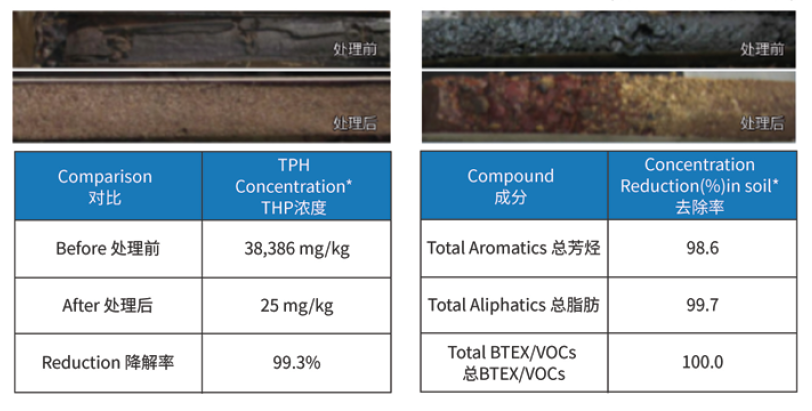Remediation of a coal tar contaminated site in New Jersey (full scale STAR project)
Profile
STAR technology was applied as theprimary remedy to achieve regulatory closure at a 37-acre former industrialfacility in Newark, NJ. Both a surficial fill unit (0-10 ft bgs) and analluvial sand unit (~10-40 ft bgs), impacted with residual and free-phases ofcoal tar from the historic operations at the site, were remediated viasmoldering combustion.
Fullscale implementation
STAR was applied at the site usingthree independent treatment systems operating ‘cells’ consisting of multipleignition points (IPs), vapor extraction wells, and interstitial thermocouples. IPswere installed within impacted zones and connected to an air supply to supportthe combustion reaction, while removable in-well heaters were deployed as theignition source. Vapor extraction wells were installed within the cell tocapture vapors for treatment using conventional aboveground means (i.e.,thermal oxidizer). Interstitial thermocouples were installed to monitortemperatures in the subsurface during operations. Cell cycle times were short(days) and following treatment the equipment was removed and reused in anothertreatment area at the site.
Remediationeffect
Fullscale operations began in 2015, with regulatory certification for site closureand land transfer achieved in September 2019.
Over150,000 lbs of coal tar were destroyed during remedial activities involving theinstallation, operation, and evaluation of over 2,200 IPs (1723 surficial fillIPs and 482 alluvial sand IPs). Remedy performance was confirmed through thecollection of ~1,000 remedy verification samples. and a multiple lines ofevidence approach consisting of cores to assess free NAPL, laboratory analysisfor EPH, SVOC, VOC, and TarGOST™ (Tar-Specific Green Optical Screening Tool)for real-time assessment of treatment performance.



